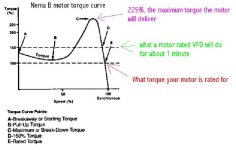leitmotif
Member
I think I have a good seat of pants understanding of momentum and inertia. I do NOT have a good understanding of how to do the calculations. It has been too many decades since my physics classes.
For example
with a motor developing 100 ft lb of torque what is the time to accelerate a vehicle weighing 4500 lbs from 0 to 60 mph on level road.
Where can I find a good study guide? Ideally using only high school algebra and not calculus.
Thanks
Dan Bentler
For example
with a motor developing 100 ft lb of torque what is the time to accelerate a vehicle weighing 4500 lbs from 0 to 60 mph on level road.
Where can I find a good study guide? Ideally using only high school algebra and not calculus.
Thanks
Dan Bentler





